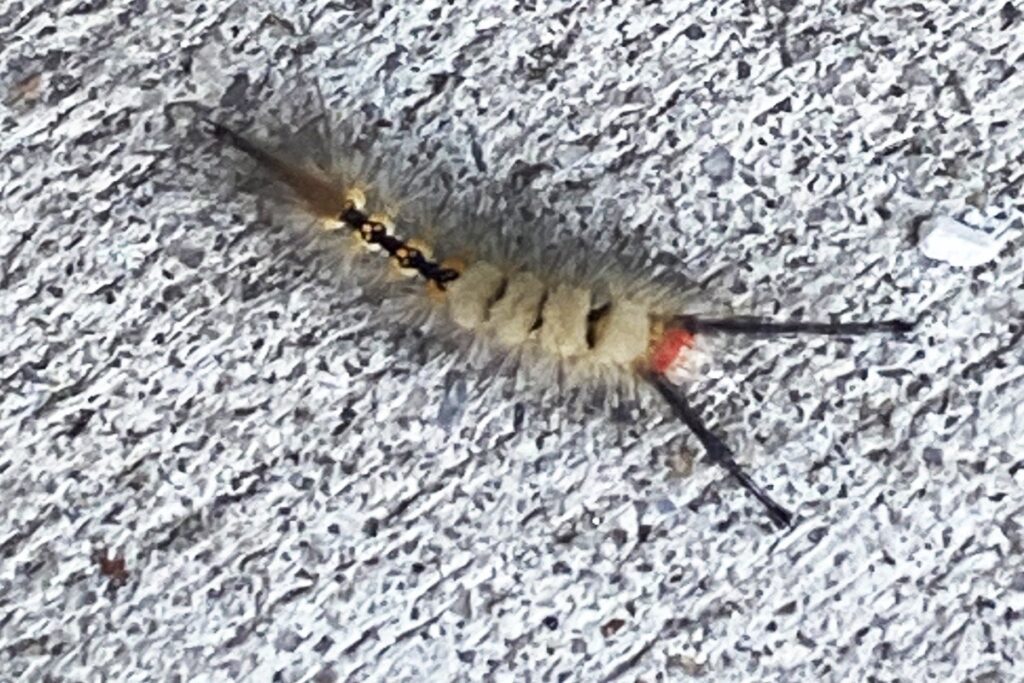Tussock moth caterpillars are crawling around Beaufort, SC. Here's what you need to know.
If you are being inundated by furry red-headed caterpillars & fuzzy white cocoons here in the Lowcountry, you’re not alone! These spooky-looking Tussock moth caterpillars have once again taken our South Carolina Sea Islands by storm.
If there’s a live oak tree around, chances are loads of tussock moth caterpillars aren’t too far away either. Tussock moth caterpillars are about an inch or two long with four brush-like tufts and red dots on the back of their bodies. They also have a pair of longer black hairs in front and a red-orange head. Eventually, these furry guys turn into moths but not before they wrap themselves EVERYWHERE around town in white cottony cocoons.
If you come across one of these fierce looking creatures, by all means try to avoid touching it! Although they don’t sting, their hairs can be quite irritating to the skin which can lead to a severe rash which can burn like the devil. If you encounter one and do have an allergic reaction, try applying strips of an adhesive material on the affected area and peel off to remove the hairs. Then, ice it down to reduce the pain and itching.

Tussock Moth Caterpillar spotted in Beaufort, South Carolina – Photo by Ginger Wareham
Facts about tussock caterpillars
Life Cycle: Winter is spent in the egg stage. Caterpillars hatch from April to June and develop through several stages (instars) over 30 to 40 days. Caterpillars pupate within grayish cocoons made of silk and larvae hairs on the trunk, branches of the host plant or on nearby objects. Adults emerge in about two weeks and mate. Females lay masses of eggs on the surface of old cocoons. There are three generations per year.
Habitat and Food Sources: Caterpillars have chewing mouthparts. Adults have siphoning mouths. Caterpillar host plants include apple, basswood, elm, maple (Norway, and silver), pear, plums, poplars, rose, sycamore, willow, wisteria and others. Some subspecies feed on live oak, redbud, pyracantha and mimosa. Young larvae skeletonize leaves while older larvae eat all of the leaf surface except for the larger veins. Source: Texas A&M University AgriLife Extension
Still looking for even more info on Tussock Moth Caterpillars? Be sure to click here and check this out!







